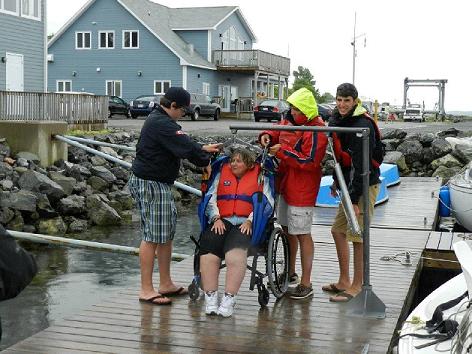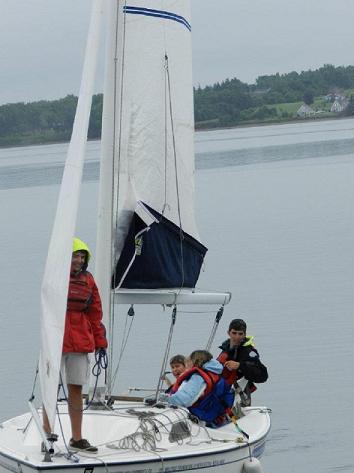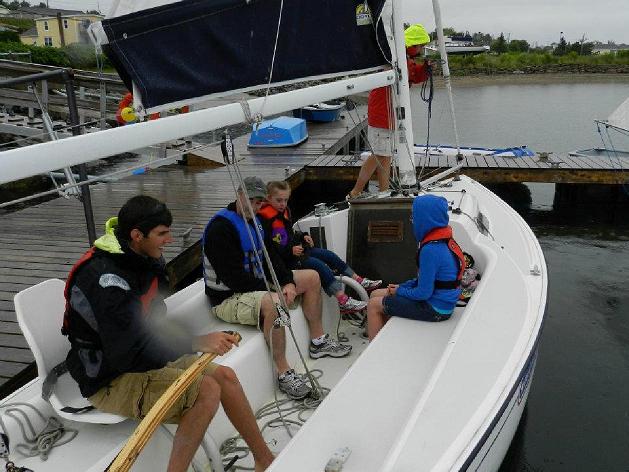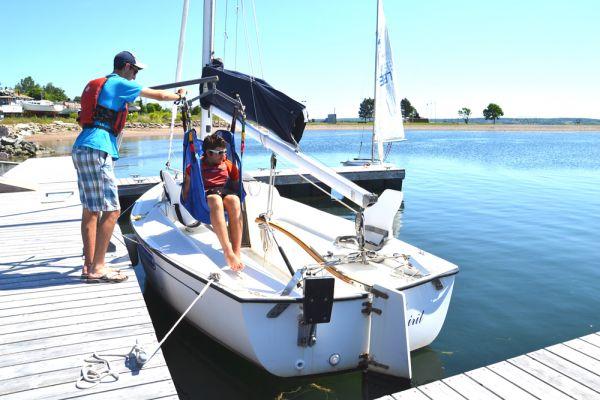Sail Able
For details on this program please contact sailable@northernyachtclub.ca
The Sail Able Program is designed to introduce those with physical or intellectual challenges to the freedom and independence offered by the sport of sailing. The program will be run during the day in conjunction with the Learn to Sail Program. Our goal is to keep the costs of the program as minimal as possible. With that being said we are charging a very nominal fee of $28 per sail which would run between 1 ½ -2hrs in length.
The program operates three boats which have each been specifically designed to accommodate sailors with challenges. We have an access dinghy, which is 2.3 metres in length and is designed for two people. The boat is controlled with a joystick situated in the middle of the boat for easy access by both sailors, and is equipped with a high boom to prevent anyone from getting struck by it as it swings across.
The other boat we operate is a 20 ft long Freedom Independence keel boat; this boat is equipped with a self tacking jib for ease of use, as well as a lead keel to prevent the boat from capsizing. The boat is designed for two people with limited mobility. Participants sit in specially designed chairs which lock in place and have a lead weight attached to each of them deep in the hull of the boat. The weights allow the chairs to pivot from one side of the boat to the other when the boat changes direction.
Martin 16
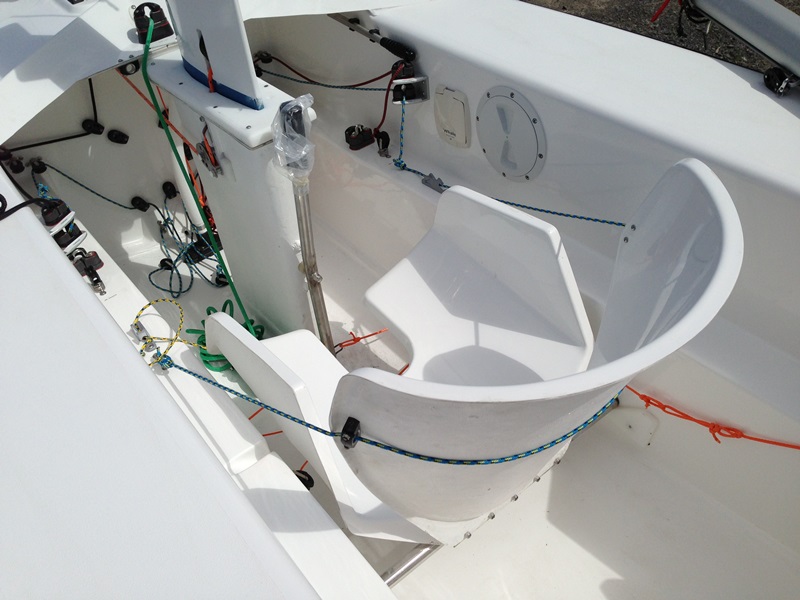
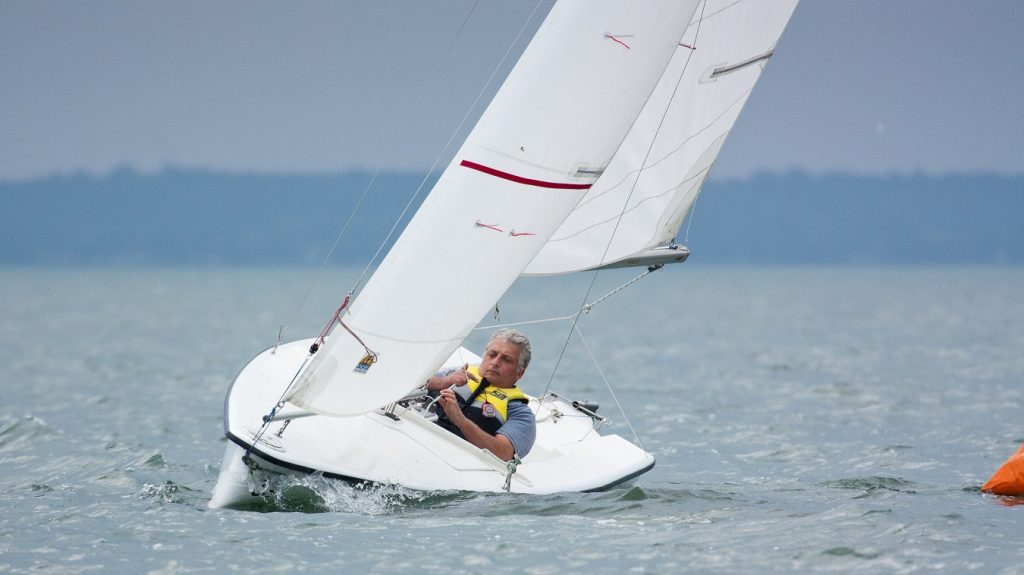
The Canadian designed and built Martin 16 is a boat that allows children and adults with physical disabilities the possibility of leaving their wheelchair or other mobility device behind and going sailing! Even individuals with weak arms or no use of their arms can sail independently using power assist technology.
As it names suggests, the Martin 16 is 16 feet long – the size of many small sailboats. But unlike other boats, the Martin 16 has been specially designed to meet the needs of sailors with disabilities.
First and foremost the boat is very safe. A 300 lb. lead bulb is attached to the keel of the boat which makes it impossible to capsize (tip over). The inner hull of the boat is filled with foam flotation that makes the boat unsinkable, even if it is totally flooded.
The sailor sits in the boat in a multi-adjustable seat that can accommodate any special postural needs. The seat is situated on the center line at the bottom of the cockpit. This is the most stable position in the boat and means that the sailor does not have to move from one side of the boat to the other as one must do on standard sailboats. If necessary quick-release straps can be used to stabilize the sailor’s trunk when the boat heels (leans to the side) on windy days.
Once comfortably seated, the joystick tiller (to control the steering) and lines (to control the sails) are directly at hand making it possible to sail the boat independently without needing to change position. A second seat for an instructor or companion is located behind the sailor’s seat.
Optional power-assist equipment can be added to the boat to allow individuals with weak arms to sail the boat using a joystick similar to those found on power wheelchairs. And for those who cannot move their arms at all the sip ’n puff system allows them to sail the boat using their breath! Even people on respirators can sail the Martin 16 independently!
The Martin 16 is the perfect boat for sailing programs for people with physical disabilities! It is currently used in adapted sailing programs around the world for recreational sailing, learn-to-sail programs and racing.
Please click HERE for the article in Canadian Yachting for more information
Accessibility
Our entire facility is wheelchair accessible including the ramp down to the dock. We are also equipped with a lift mechanism mounted into the dock to allow those with limited mobility to be assisted in and out of the boats. The lift is designed with a comfortable harness to ensure the user is properly supported during transport.
Program Partners
Special thanks to our program partners. This initiative could not have been launched without the generosity and support of organizations such as the Rotary Club of North Sydney and the Canadian Paraplegic Association.


